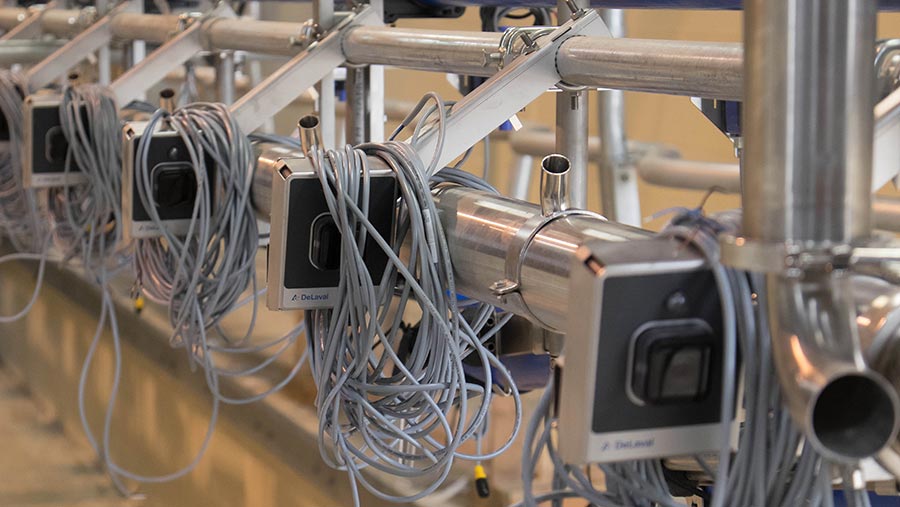5 steps for top returns from your dairy housing
 © Tim Scrivener
© Tim Scrivener Investing in new dairy housing should be cost-effective and should deliver the best level of animal welfare.
Tony Evans, head of business consultancy The Andersons Centre, looks at five points that must be considered before calling in the builders
1. Who owns the farm?
With the potential of a 40-year investment on an owned farm, it is probably simpler to justify an investment in dairy housing by comparing it with a business that is let out (see table) as the total amount repayable is lower.
On a tenanted farm it could be very beneficial to get the landowner to carry out the investment and establish an independent financial agreement (IFA) whereby the landlord would complete the investment by either investing free cash or borrowing against the asset value of the land (something a tenant cannot do).
See also: How to avoid the 9 most common dairy cow housing pitfalls
This could be 100% tax deductible and would leave the tenant free to invest in other assets that do not compromise their balance sheet.
Dairy housing investment costs for owners and tenants
|
Farm type |
Amount borrowed |
Borrowing period |
Capital repayment |
Return on capital based on average interest calculation |
Total amount repayable per annum |
|
Owned |
£200,000 |
40 |
£200,000/40 =£5,000/year |
10% (£10,000/year) |
£15,000 |
|
10-year business tenancy |
£200,000 |
10 |
£200,000/10 = £20,000/year |
10% (£10,000/year) |
£30,000 |
|
Tenancy |
£200,000 (landlord) |
– |
– |
8% (landlords have lower expectations because they own the asset) |
8% of £200,000 = £16,000 a year |
2. How big does the investment need to be?
Remember the investment could be for up to 40 years – and most certainly beyond 20 years – so it is important to discuss it with everyone involved in the ownership as well as the next generation.
It is also important to think about how many cows might be kept in the future.
If producer numbers decline at 3-5% each year and production a cow remains relatively flat, then in 20 years’ time each herd could have double the number of cows.
While it would be very unwise to invest in double the housing and facilities now, it is essential to ensure you have a plan to add on facilities at a later date.
3. What milk production system will you practise?
The milk price cycles between high and low every four to five years, with planning and profitability best targeted on a milk price paid of the average over such a period. At present this would be sensible at about 25p/litre.
It is essential housing and other facilities are invested in in tandem with the costs of production of the system and caution needs to be applied if the milk price is not underwritten, such as via an aligned contract.
Top tips
- Think a long way ahead
- Remember growth and ensure it fits with any future investment
- Don’t increase the cost of production (self-feed v feeder wagon)
- Borrow and repay over a realistic period while challenging for a 5% to 10% return on capital
- The most cost-effective shed could still be one with no roof – it is called a paddock and can save between £1 and £1.50 a cow a day for most conventional housing
When thinking about housing design, time should be a key consideration – with the aim being to reduce feed times for example.
Think system and efficiency, and if your current business is very successful then just repeat the formula – don’t get dragged into something new unless the return on capital increases and you have seen it work financially elsewhere.
4. How will you find the investment?
If your investment plan includes borrowing, be very careful not to put unrealistic pressure on repayment or pay it off before the end of its life expectancy, which is typically 20 years for most builds.
Too many businesses try to repay debt too quickly and put undue pressure on current trading costs and cashflow. Be realistic about repayment terms if you are borrowing money.
Splitting the debt repayment with both fixed and variable interest rates (and the same approach for capital repayment) allows a business to be strong through both a high and low milk price payment.
If there is a cash surplus in a high-milk price environment, it is great to be positive and pay down debt even quicker.
5. Will there be residual value/other use if dairying ceases?
End-of-life value is important. However, beware extra capital cost – where the interest rate may be low, but the operating cost increased due to the scale of investment.
